|
February 2009
African American History Month
African American History Month, also called Black History Month, has been observed since the nation's bicentennial in 1976 as a way to recall and commemorate the achievements and history of Americans of African descent. Its origins are found in what was originally known as Negro History Week, established in the 1920s through the efforts of Dr. Carter G. Woodson and other African American scholars and observed during the second week of February to coincide with the birthdays of Frederick Douglass and Abraham Lincoln. Presented here are BLS data that provide an economic snapshot of African Americans in the United States today.

African Americans in the Labor Force
In 2008, there were 17.7 million African Americans in the labor force — accounting for 11 percent of all Americans aged 16 years and older who were employed or looking for work. The African American labor force is younger than the total labor force; 64 percent of African American labor force participants are under the age of 45, compared with 59 percent of all labor force participants.
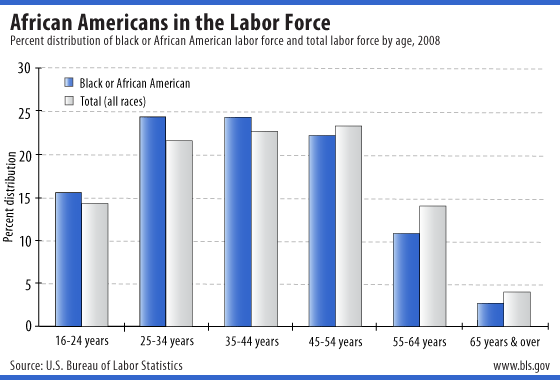
Source: Current Population Survey | Chart Data
Employment by Industry
Of those African Americans in the labor force, about 16 million were employed in 2008. More worked in the education and health services sector than in any other industry sector. In 2008, there were about 4.5 million African Americans — more than 1 in 4 of employed African Americans — working in education and health services. Among all employed persons in the United States, just over 1 in 5 was in education and health services.
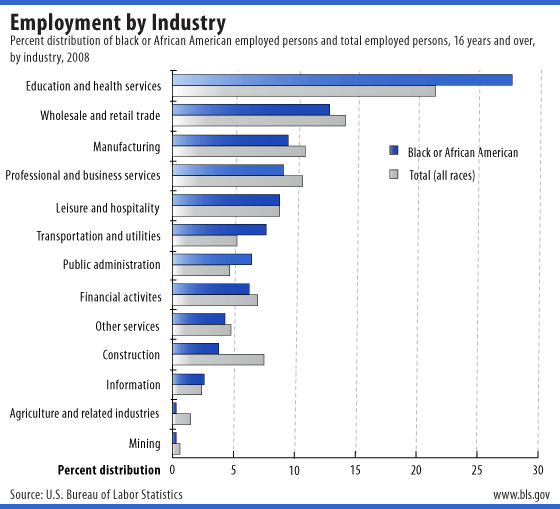
Source: Current Population Survey | Chart Data
Educational Attainment
More than half of the African Americans in the labor force in 1970 had less than a high school diploma. By 2008, that figure had declined dramatically to about one in ten. Just as notable was the increase in those with education beyond the high school level — from 16 percent of the African American labor force in 1970 to 54 percent in 2008.
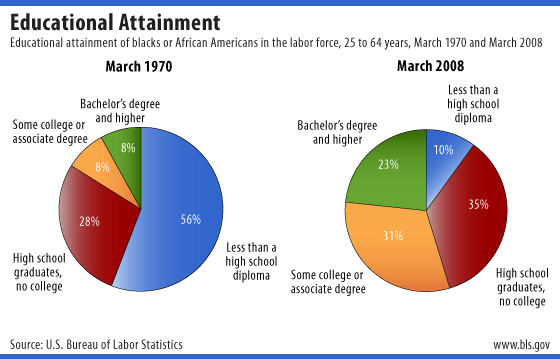
Source: Current Population Survey | Chart Data
NOTE: Data for 1970 refer to the black and other races group; data for 2008 refer to persons who are black or African American only. Since 1992, data on educational attainment have been based on the "highest diploma or degree received," rather than the "number of years of school completed." Percents may not sum to 100 due to rounding.
More School, More Earnings
Higher education leads to higher earnings. African American college graduates earn more than twice as much as those with less than a high school diploma.
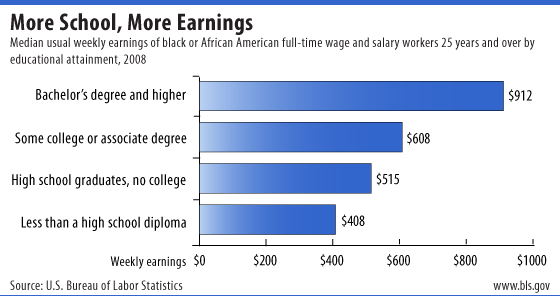
Source: Current Population Survey | Chart Data
Additional Education, Less Unemployment
Unemployment rates fall as educational attainment increases. In 2008, the unemployment rate for African Americans 25 years and over without a high school diploma was over 14 percent, while the jobless rate for college graduates was 4 percent. This pattern has persisted over time.
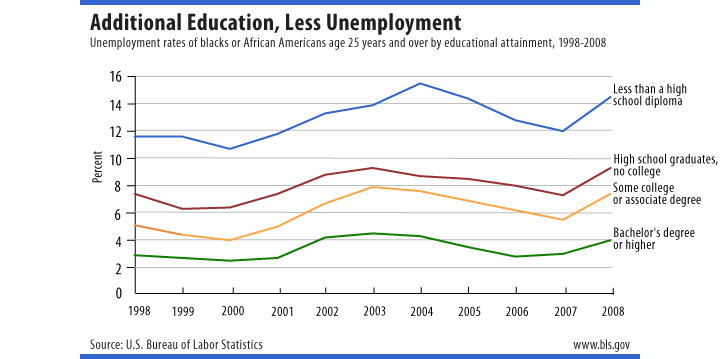
Source: Current Population Survey | Chart Data
Time Use
There is more to life than work; the American Time Use Survey measures the amount of time devoted each day to various activities. The chart below shows how employed African Americans and employed persons in the total U.S. population spend time on an average workday.
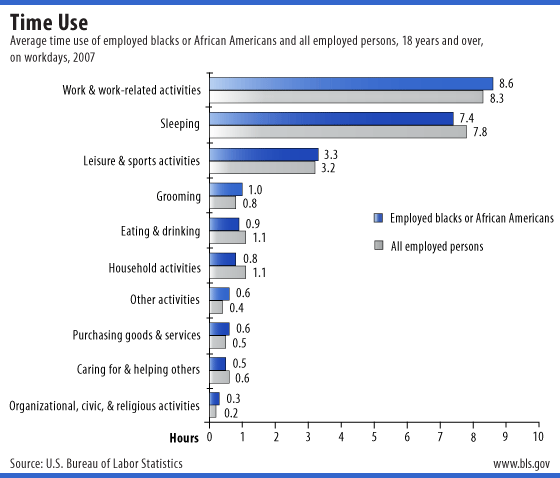
Source: American Time Use Survey | Chart Data
Note: Data in text, charts and tables are the latest available at the time of publication. Internet links may lead to more recent data.
General Information: (202) 691-5200
Media Contact: (202) 691-5902
|